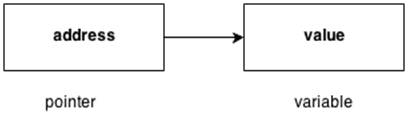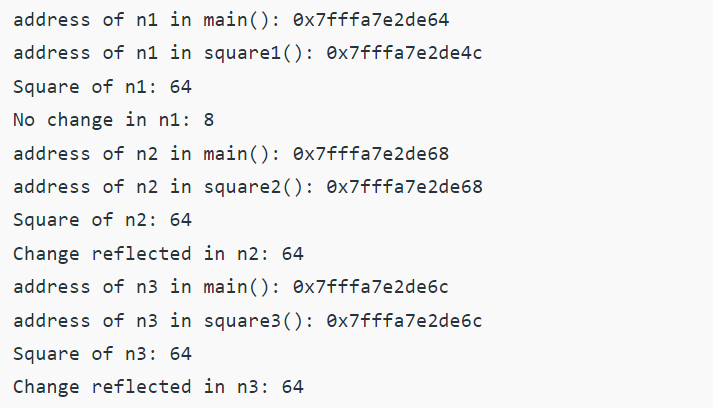C++ PointersThe pointer in C++ language is a variable, it is also known as locator or indicator that points to an address of a value. The symbol of an address is represented by a pointer. In addition to creating and modifying dynamic data structures, they allow programs to emulate call-by-reference. One of the principal applications of pointers is iterating through the components of arrays or other data structures. The pointer variable that refers to the same data type as the variable you're dealing with has the address of that variable set to it (such as an int or string). SyntaxHow to use a pointer?
Since the data type knows how many bytes the information is held in, we associate it with a reference. The size of the data type to which a pointer points is added when we increment a pointer. 
Advantage of pointer1) Pointer reduces the code and improves the performance, it is used to retrieving strings, trees etc. and used with arrays, structures and functions. 2) We can return multiple values from function using pointer. 3) It makes you able to access any memory location in the computer's memory. Usage of pointerThere are many usage of pointers in C++ language. 1) Dynamic memory allocation In c language, we can dynamically allocate memory using malloc() and calloc() functions where pointer is used. 2) Arrays, Functions and Structures Pointers in c language are widely used in arrays, functions and structures. It reduces the code and improves the performance. Symbols used in pointer
Declaring a pointerThe pointer in C++ language can be declared using ∗ (asterisk symbol). Pointer ExampleLet's see the simple example of using pointers printing the address and value. Output: Address of number variable is:0x7ffccc8724c4 Address of p variable is:0x7ffccc8724c4 Value of p variable is:30 Pointer Program to swap 2 numbers without using 3rd variableOutput: Before swap: ∗p1=20 ∗p2=10 After swap: ∗p1=10 ∗p2=20 What are Pointer and string literals?String literals are arrays of character sequences with null ends. The elements of a string literal are arrays of type const char (because characters in a string cannot be modified) plus a terminating null-character. What is a void pointer?This unique type of pointer, which is available in C++, stands in for the lack of a kind. Pointers that point to a value that has no type are known as void pointers (and thus also an undetermined length and undetermined dereferencing properties). This indicates that void pointers are very flexible because they can point to any data type. This flexibility has benefits. Direct dereference is not possible with these pointers. Before they may be dereferenced, they must be converted into another pointer type that points to a specific data type. What is a invalid pointer?A pointer must point to a valid address, not necessarily to useful items (like for arrays). We refer to these as incorrect pointers. Additionally, incorrect pointers are uninitialized pointers. Here, ptr1 is not initialized, making it invalid, and ptr2 is outside of the bounds of arr, making it likewise weak. (Take note that not all build failures are caused by faulty references.) What is a null pointer?A null pointer is not merely an incorrect address; it also points nowhere. Here are two ways to mark a pointer as NULL: What is a pointer to a pointer?In C++, we have the ability to build a pointer to another pointer, which might then point to data or another pointer. The unary operator (*) is all that is needed in the syntax for declaring the pointer for each level of indirection. Here b points to a char that stores 'g', and c points to the pointer b. What are references and pointers?
Example Output 
Next Topicsizeof() operator in C++
|
 For Videos Join Our Youtube Channel: Join Now
For Videos Join Our Youtube Channel: Join Now
Feedback
- Send your Feedback to [email protected]
Help Others, Please Share










